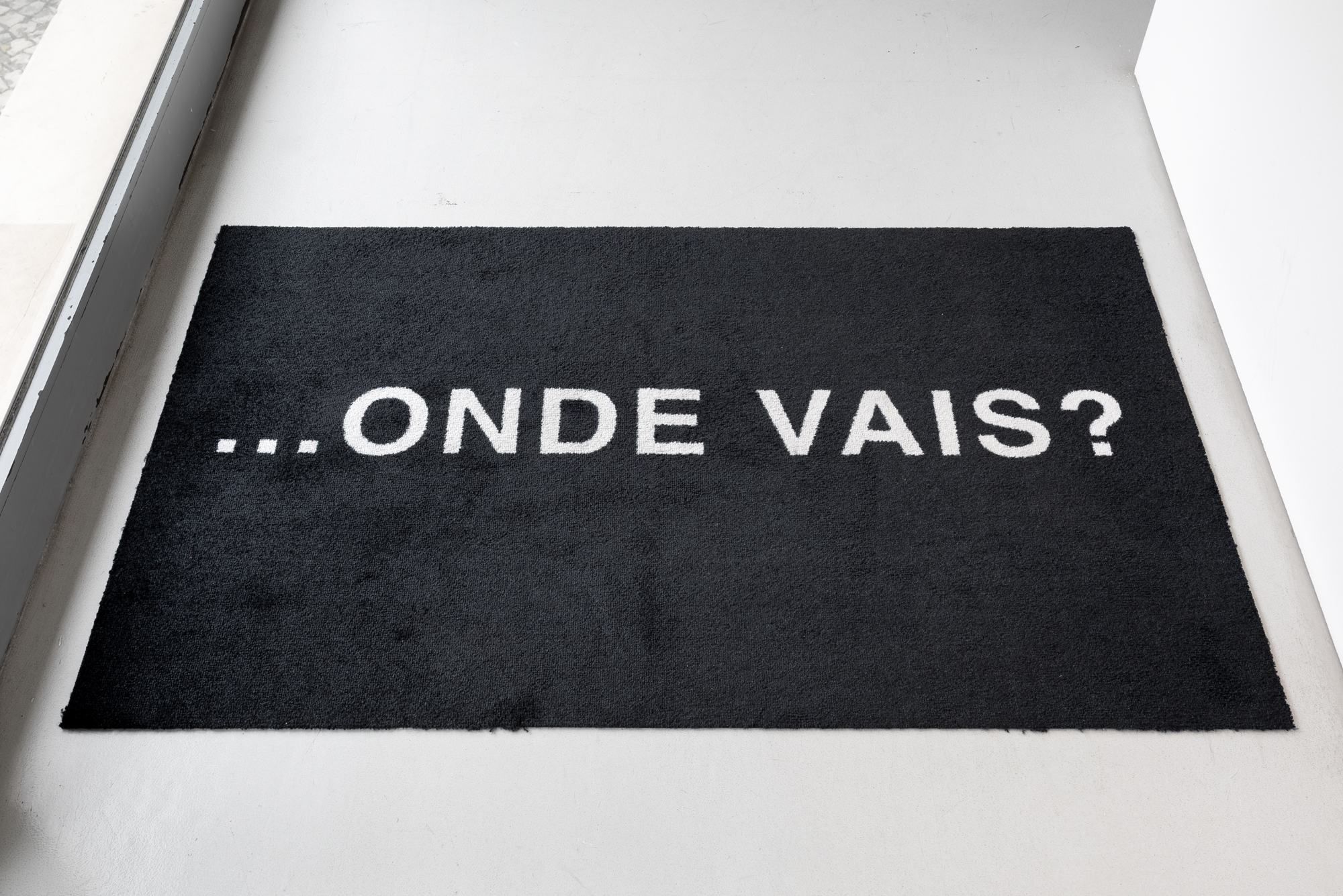
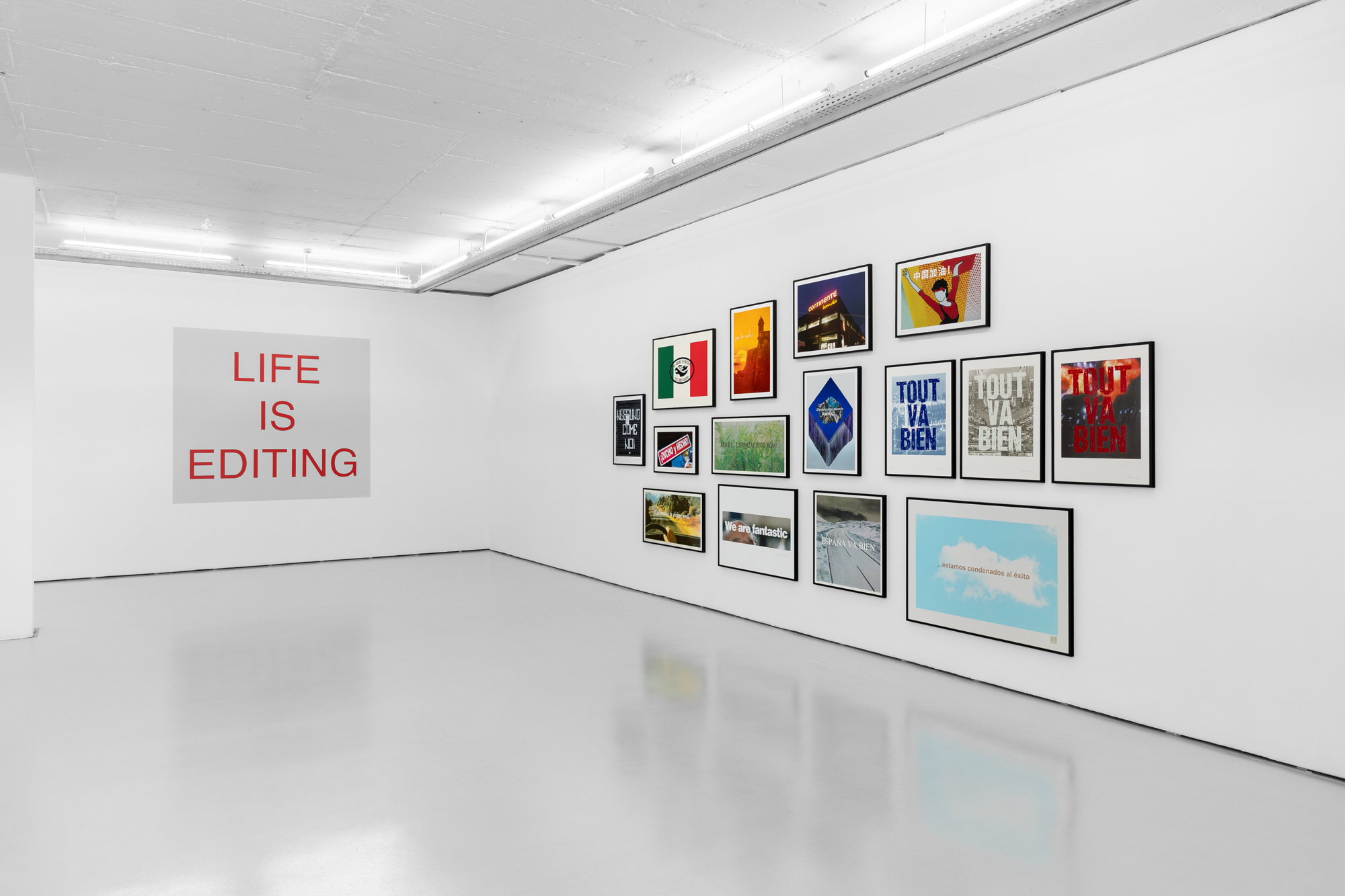
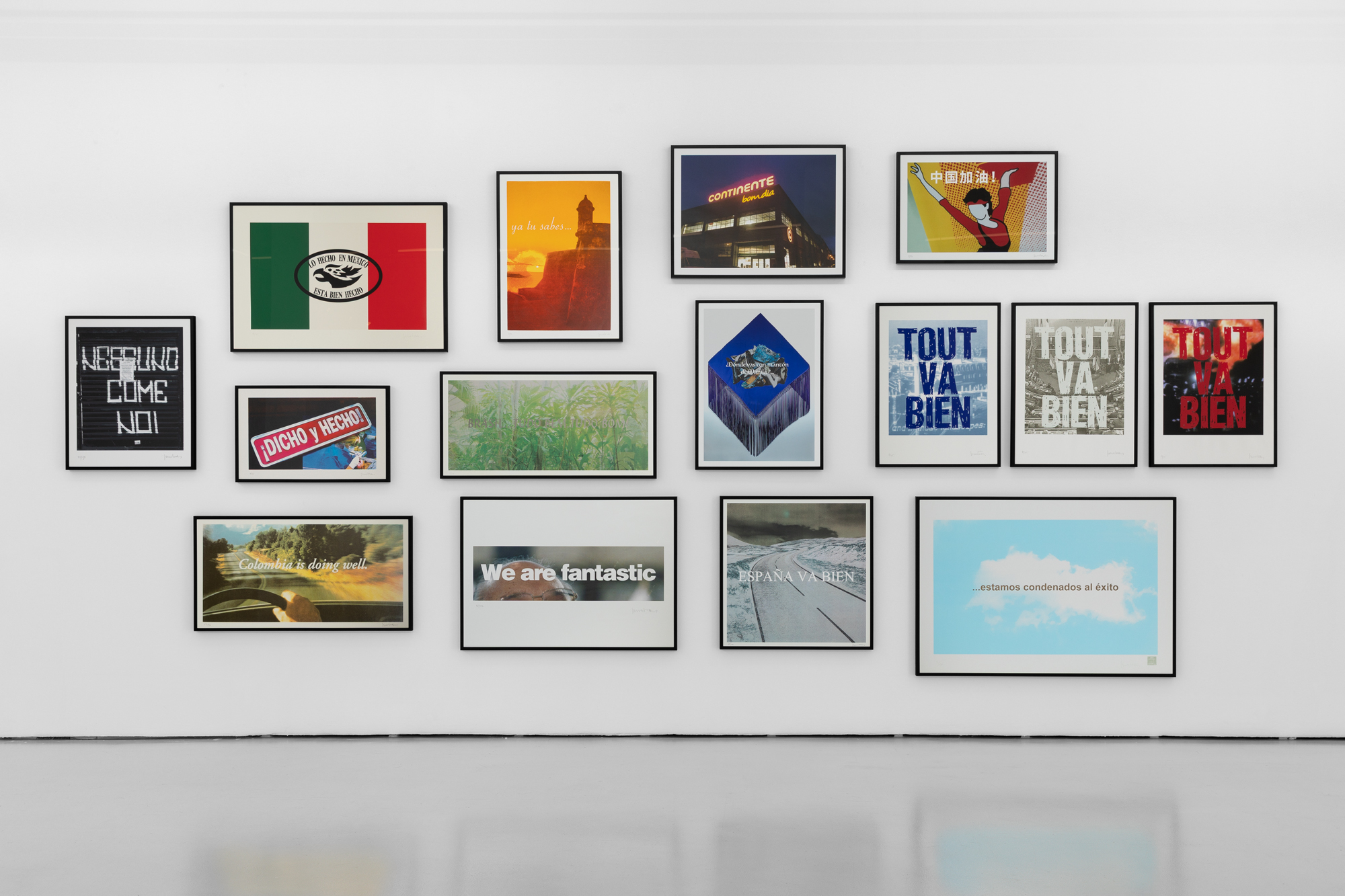

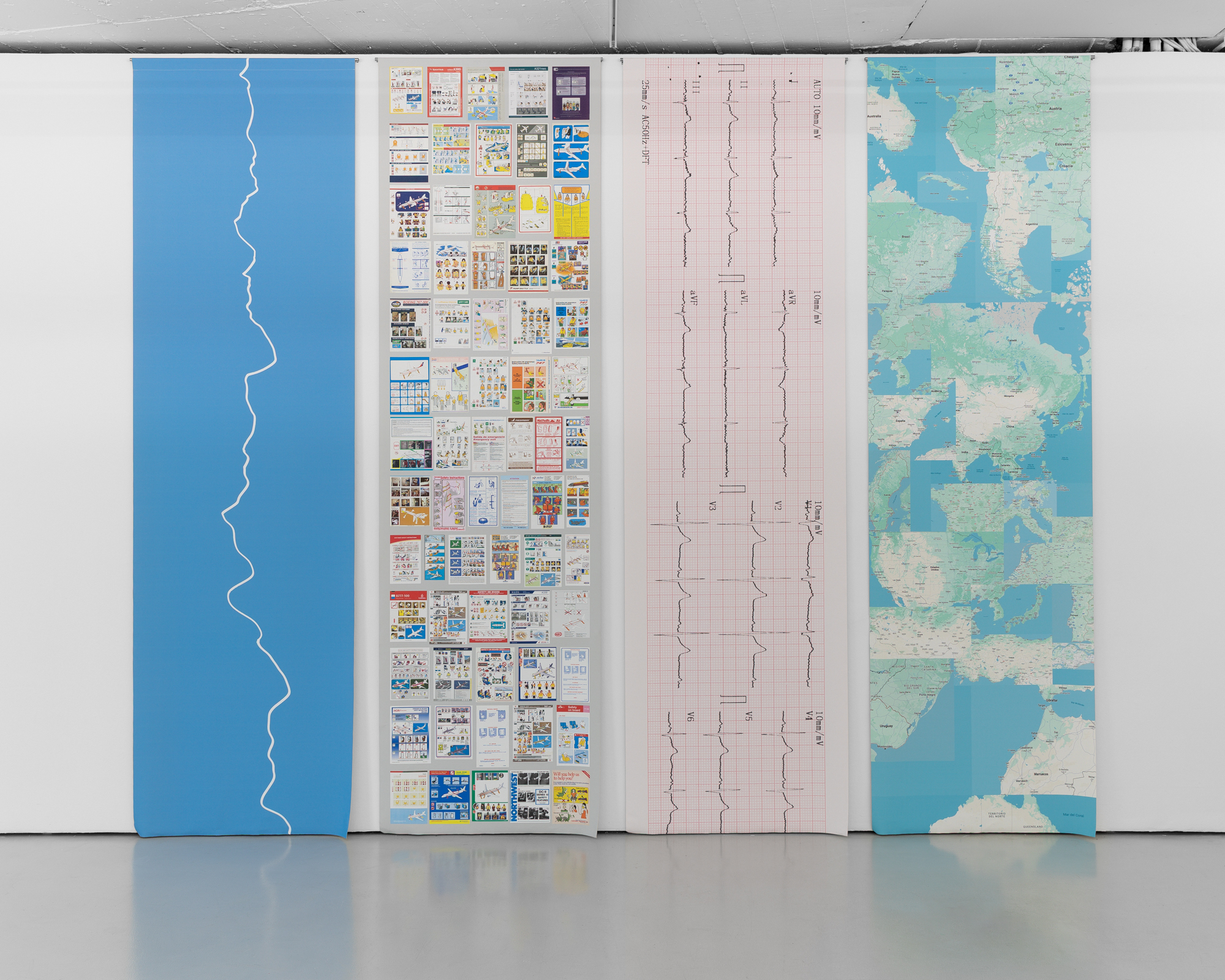
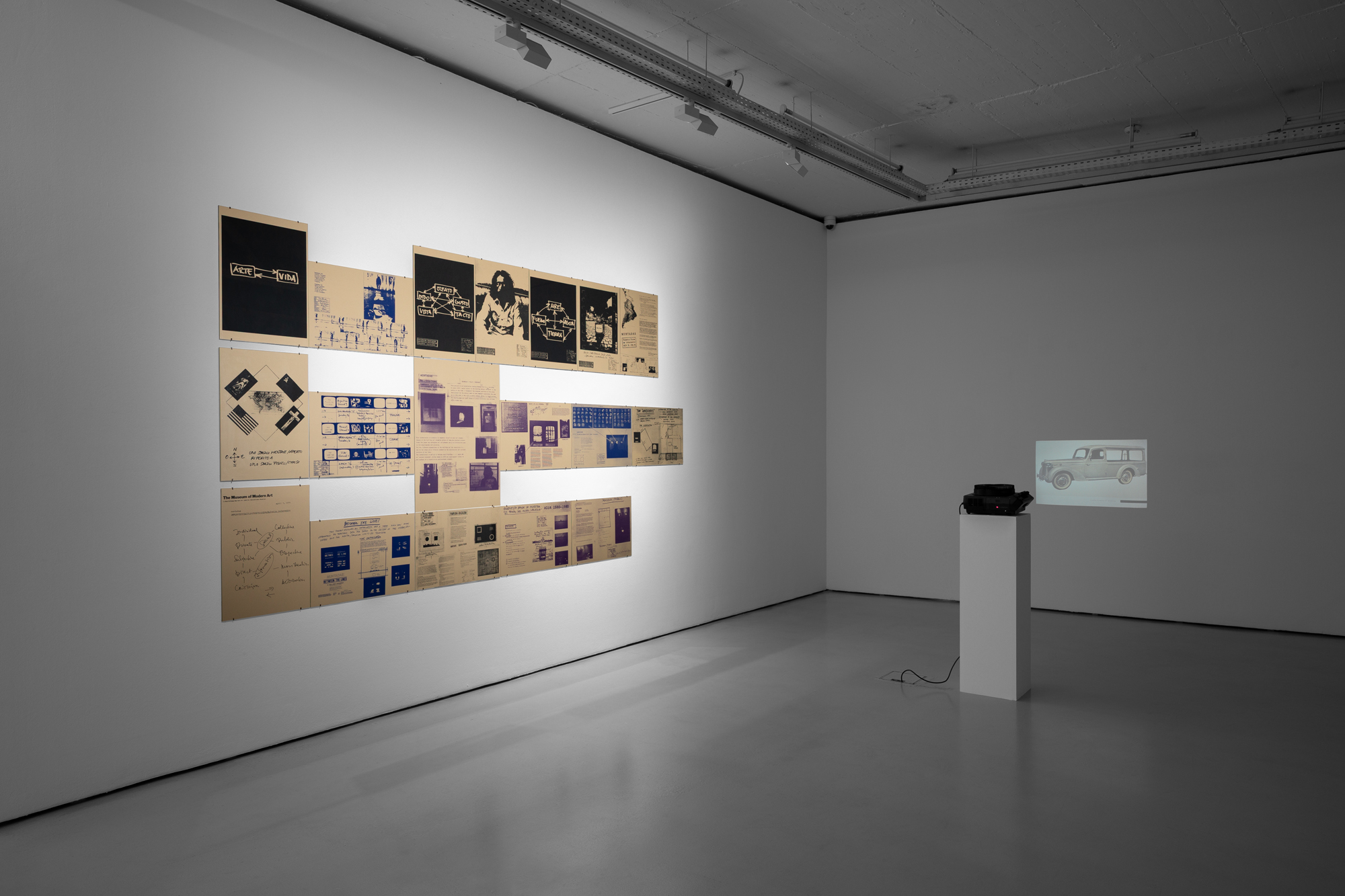

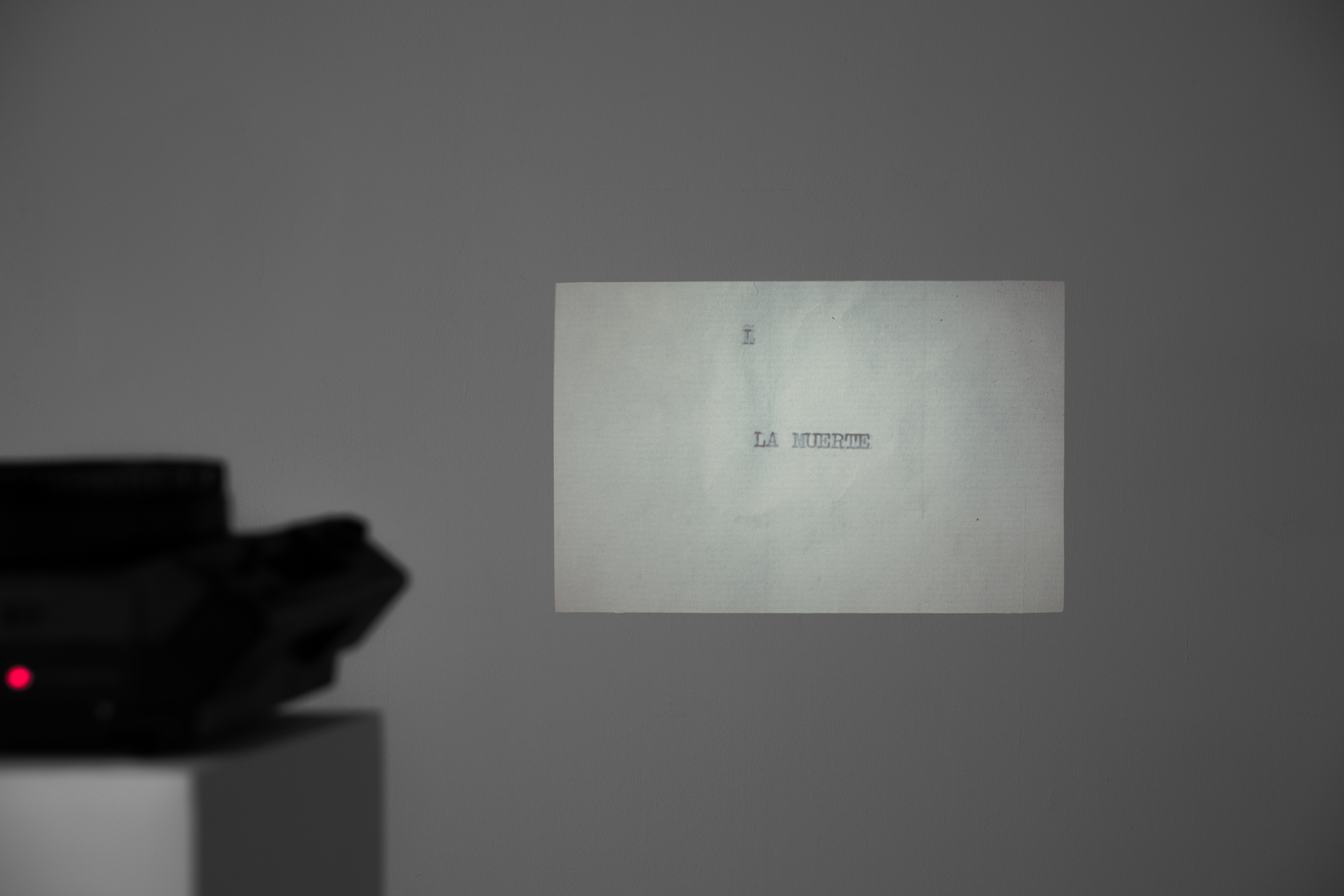
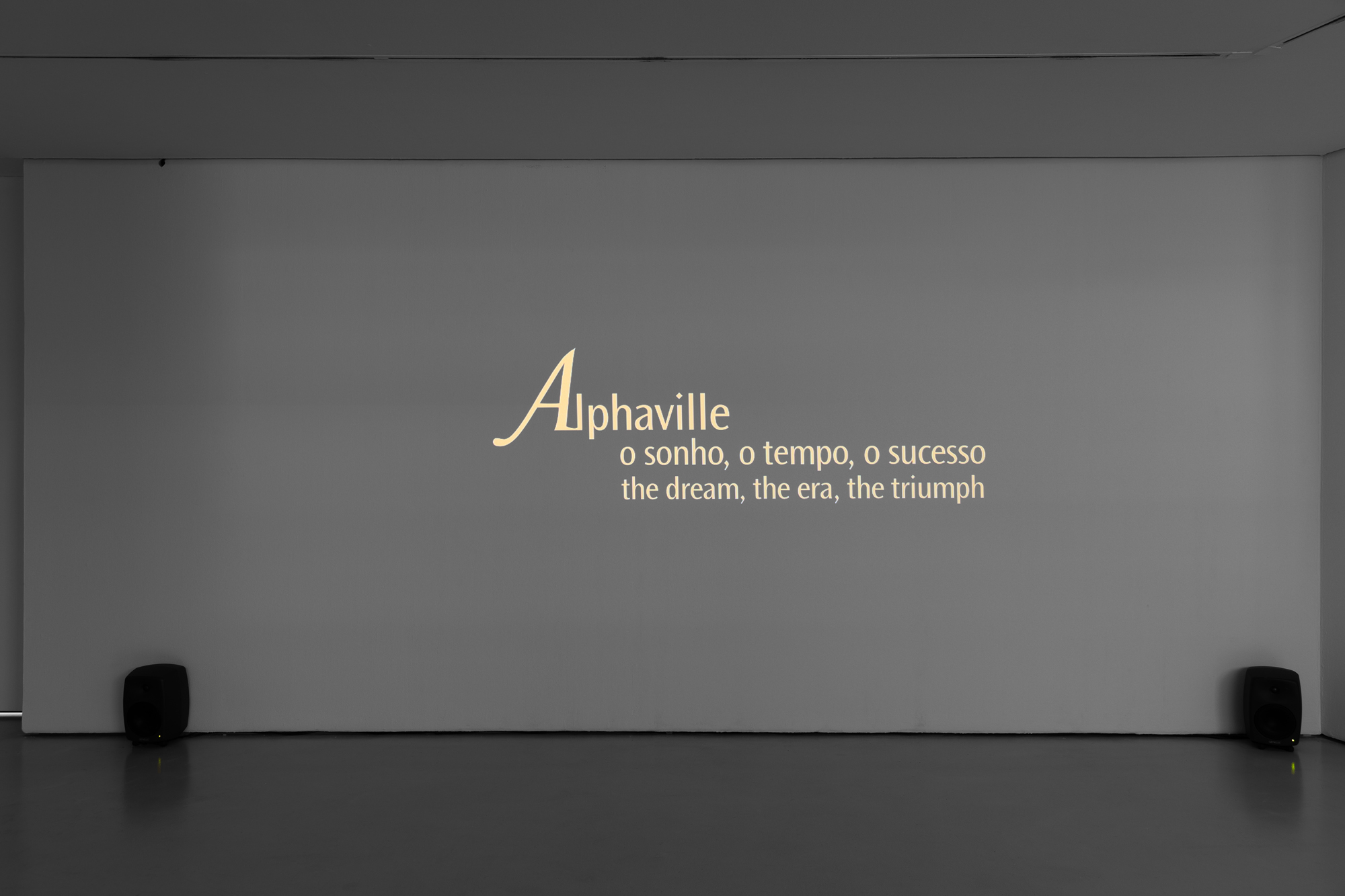
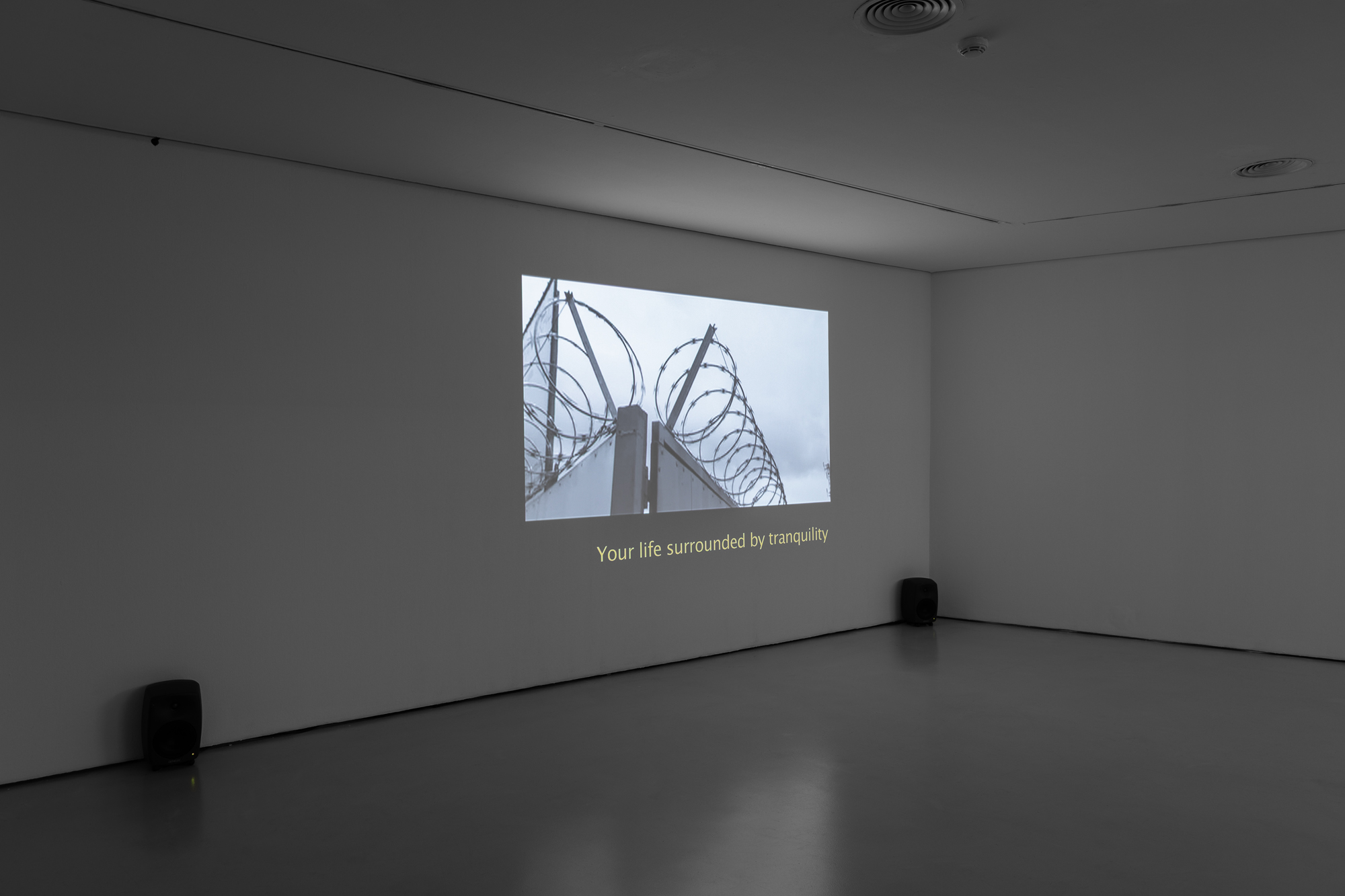
© Vasco Stocker Vilhena
The title of the exhibition Outros Lugares / Everywhere emplace us in multiple spaces and every possible direction. Muntadas has been characterized as a nomad, researching in different con- texts where he stands as an outsider. The journey has provided him with a point of departure for his work, the condition of being ‘in between’ (Muntadas: Between, Daina Augaitis, 2011 p. 10) a place of observation and a listening filter between cultures, languages and frontiers. His work is committed and critical, questioning and analyzing the visible and invisible systems of communication and the power of the media in our complex world. For over five decades Muntadas has been asking questions to translate the system of signs and codifications. He raises everyday questions to invite us to reflect on the limits and transformations on the shared spaces, private and public.
A doormat placed at the entrance of the gallery presents us with an open-ended question ... Onde vais? /Where are you going? (2024). It is a question that indicates movement and a possible destination, but for whom? The audience, the gallery or society itself? The work can provide a space for reflection and debate to analyze the possible futures of the art system and our personal journeys within it.
The frame to inquire is drawn by a constant curiosity, for Muntadas has always been a driving force to start working on a new project. In the late 60‘s and early 70’s he developed his first works in the form of activities, actions and experiences on the sub-senses that are not included in a traditional aesthetics, sharpening his perception of everyday material and personal space. Metaphorically, the artist ended exploring works with the body with a slide installation, Reflexões sobre a morte / Reflections on death (1973), which is a compilation of images related to the formal established elements for a stylish and traditional burial.
In 1971 Muntadas moved to New York establishing a working base, and then begun to explore media art through video and television with small-format actions in the public sphere. He then started to use video as a resistance tool to counter-information from the main ‘media landscape’. A concept Muntadas coined in reference to the growing communicational space that emerged with the amplification of information in the press, television, and in the new communication plat- forms in urban environments.
At that time, Muntadas developed a key manifesto which became a moto Art ⇄ Life (1974), in which art and life were inextricably linked, a conviction that underlies his entire body of work as well as his day-to-day actions embodied in his statement, ‘I work where I live and I live where I work’ (Eugeni Bonet, Monographs — Muntadas, Fundació ”la Caixa”, 2011). Around the same time he started travelling to Latin America to research and discover more about that continent and the unified image that at that time was projected in the media. Muntadas opened a line of investigation in relation to fear as a form of instrumentalization as it has become a political weapon of deterrence or control. We all understand personal fear, and fear comes before or after violence. He studied the impact of fear on private and public spaces reflecting the economic status in the fortress communities of Latin American cities. The video installation Alphaville e outros (2010) combines Jean-Luc Godard’s dystopian science fiction film with the gated communities of São Paulo that make up the landscape of an amphitheatrical city promising security from external threats.
Muntadas has kept his routine of revisiting the countries he has established a working relation- ship, in the case of Portugal he has been working and exhibiting since 1979 (1). A new serigraphy for Portugal joins the work series City Sentences (frases), which are synthetic sentences that represent in a micro way the language and the country in which the phrase belongs. The sources are varied and come from politicians, newspapers and popular culture combining the representative slogan with a background image. The artist plays with irony and complexity to reflect on the real situations the countries are experiencing at that moment. The new work Bom dia (2025) says ‘Continente bom dia’ in fluorescent yellow neon which stands against the dark sunset, a paradox- ical image. In the past three years, Portugal has seen significant political instability, leading to two legislative elections in two years. The country is in a continuous loop process of restarting a new government.
Travel has been a crucial element in Muntadas’ trajectory, acting as an engine for reflection and visual experimentation. Another works that are under the ideogram Art ⇄ Life are Life is Editing (2024) and Keep Moving (2024) which reflect on the journey, playing with the voyage of life and travel. The installation Keep Moving is composed by four journeys which are a line done by free- hand, a compilation of airplane safety cards, an electrocardiogram and a new composition with maps from all the ultimate destinations the artist has been. His own map of life. The experience of a life journey where editing is key to get the final altered film through cutting frames.
Carolina Grau
May 2025
—
1 The first solo exhibition by the artist in Portugal was in 1979 at Galeria de Belém, in Lisbon, titled "Muntadas: Subjetividade/Objectividade: Informação Privada/Pública". In 1992 Muntadas had two solo shows in Portugal - ‘Intervenções: A Proposito do Publico e do Privado’ at Museu Serralves in Porto and ‘Palavras: A sala de conferencia de imprensa’ at Galeria Graça Fonseca in Lisboa.